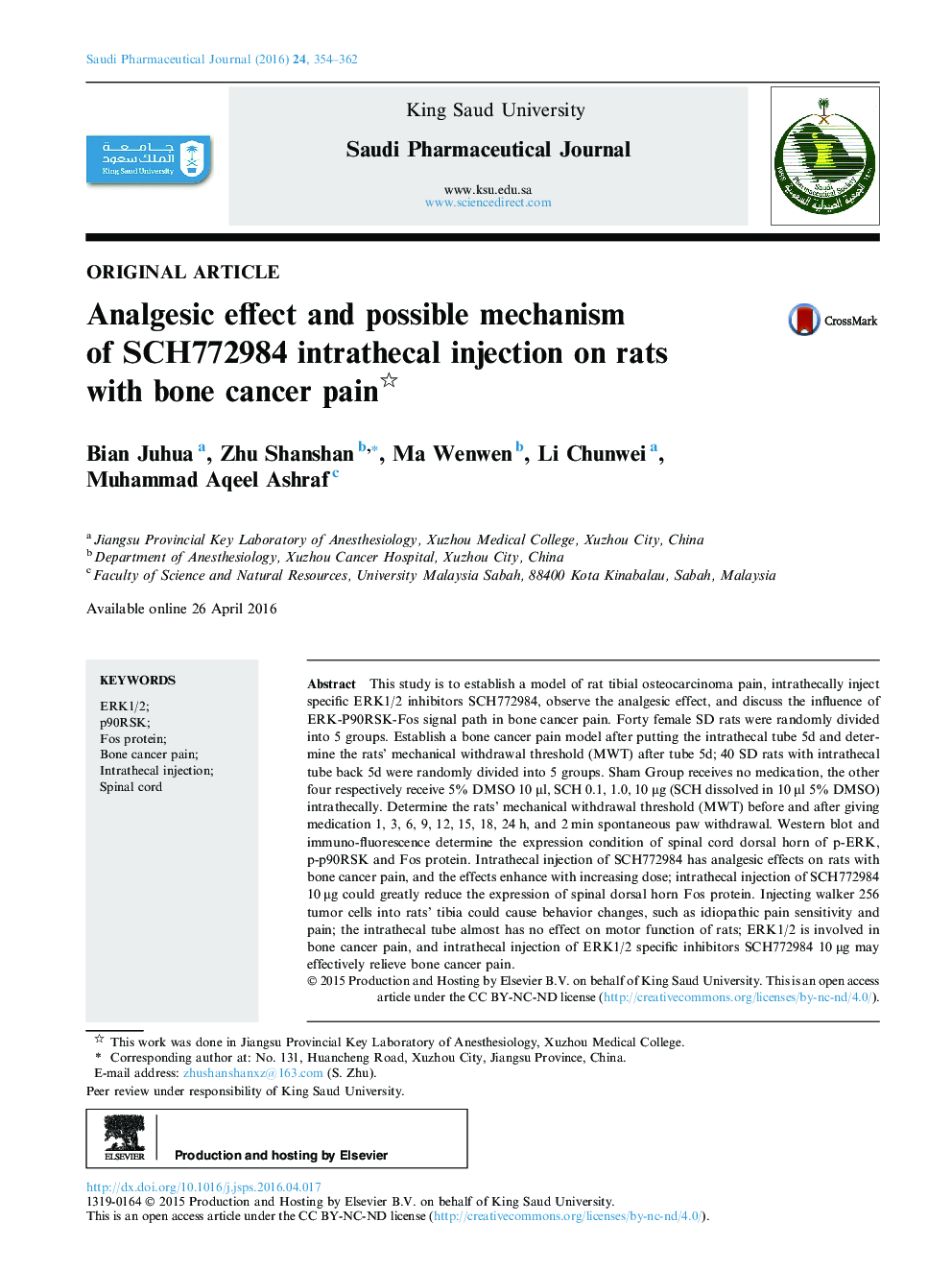| Article ID | Journal | Published Year | Pages | File Type |
|---|---|---|---|---|
| 2509248 | Saudi Pharmaceutical Journal | 2016 | 9 Pages |
This study is to establish a model of rat tibial osteocarcinoma pain, intrathecally inject specific ERK1/2 inhibitors SCH772984, observe the analgesic effect, and discuss the influence of ERK-P90RSK-Fos signal path in bone cancer pain. Forty female SD rats were randomly divided into 5 groups. Establish a bone cancer pain model after putting the intrathecal tube 5d and determine the rats’ mechanical withdrawal threshold (MWT) after tube 5d; 40 SD rats with intrathecal tube back 5d were randomly divided into 5 groups. Sham Group receives no medication, the other four respectively receive 5% DMSO 10 μl, SCH 0.1, 1.0, 10 μg (SCH dissolved in 10 μl 5% DMSO) intrathecally. Determine the rats’ mechanical withdrawal threshold (MWT) before and after giving medication 1, 3, 6, 9, 12, 15, 18, 24 h, and 2 min spontaneous paw withdrawal. Western blot and immuno-fluorescence determine the expression condition of spinal cord dorsal horn of p-ERK, p-p90RSK and Fos protein. Intrathecal injection of SCH772984 has analgesic effects on rats with bone cancer pain, and the effects enhance with increasing dose; intrathecal injection of SCH772984 10 μg could greatly reduce the expression of spinal dorsal horn Fos protein. Injecting walker 256 tumor cells into rats’ tibia could cause behavior changes, such as idiopathic pain sensitivity and pain; the intrathecal tube almost has no effect on motor function of rats; ERK1/2 is involved in bone cancer pain, and intrathecal injection of ERK1/2 specific inhibitors SCH772984 10 μg may effectively relieve bone cancer pain.
